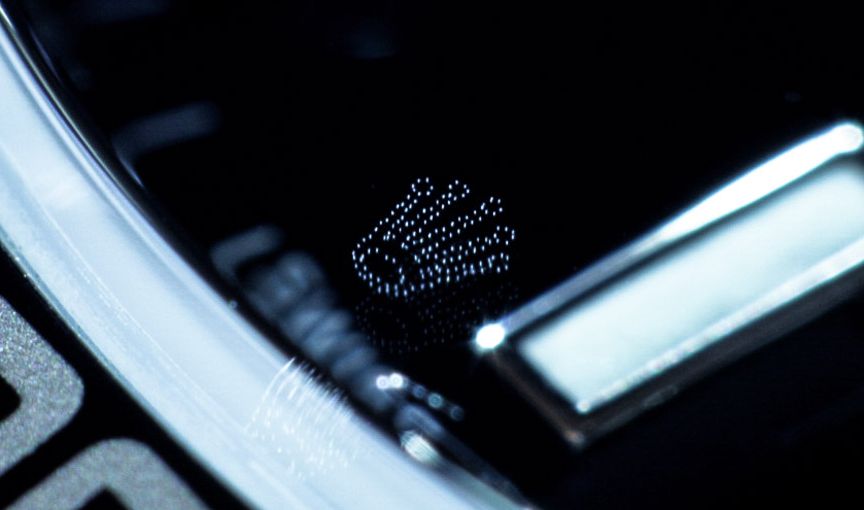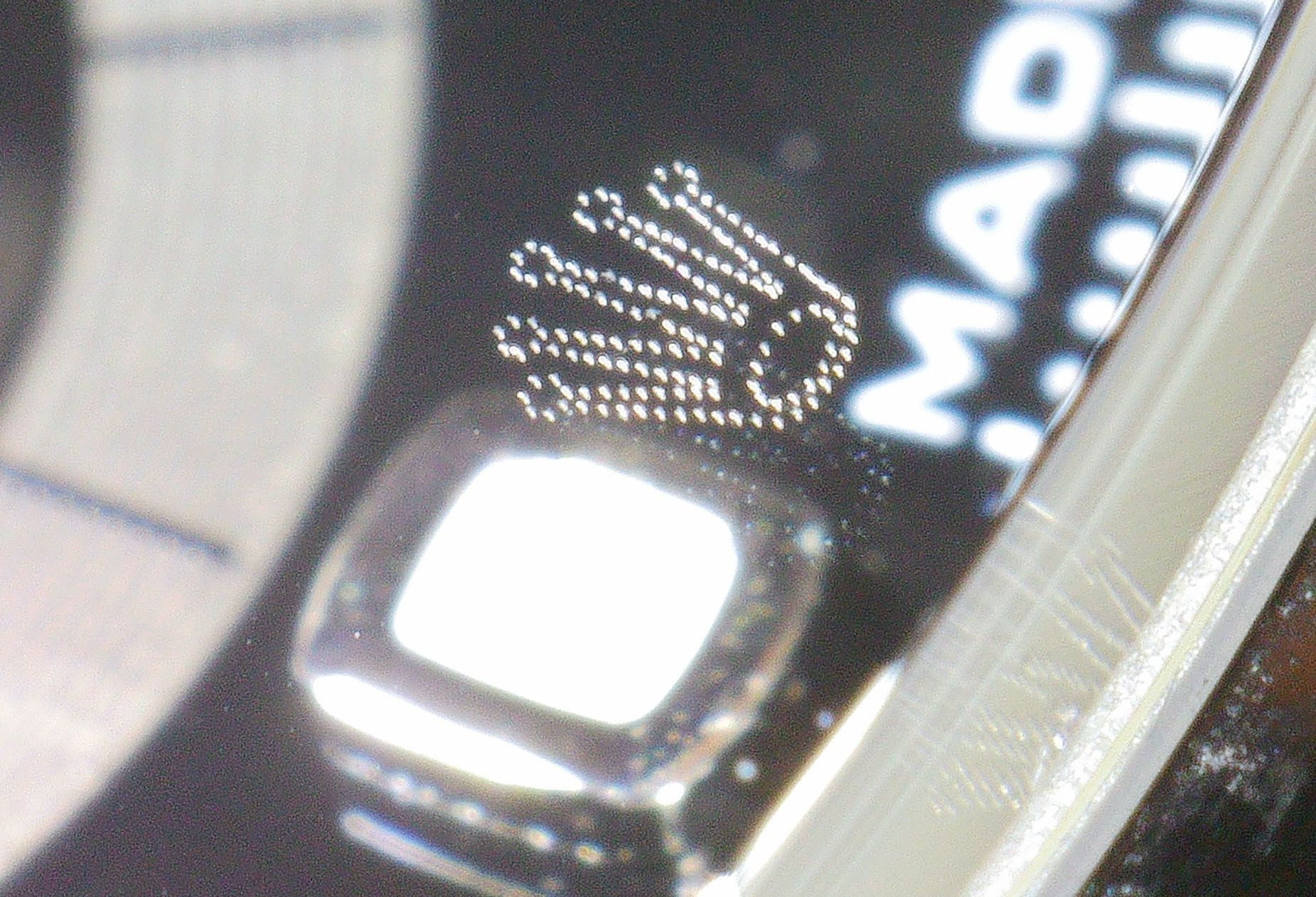I don't know if there's already a post about something like this... I honestly wouldn't know what to search for. But I was looking at gen vs. rep LECs, and I noticed that all the gen LECs aren't exactly straight:
GEN:

Whereas all of those on reps are very nicely aligned.
REP (my noob v4):

This makes me think that Rolex isn't getting the LEC dots aligned because they can't -- they have infinite money, if a factory in China can align dots on an LEC, then Rolex could if Rolex wanted to. From this we can conclude that Rolex is making the dots of their LEC not perfectly aligned because it wants to have the dots not perfectly aligned.
The second thing that I find interesting, is that if a crystal is replaced by Rolex during a service, the new crystal has an S etched into the hole in the crown:

And suspiciously, the dots on the S-version of the LEC crystal are very well aligned.
To me this feels like Rolex is encoding the serial number of the watch into the alignment pattern of the dots in the original LEC as an authenticity security feature. Doing so would be quite easy for Rolex in production, the laser etching could be one of the final steps after the case and blank crystal have been assembled, the laser etching machine simply etches a crown pattern that's distorted using a cryptographic hash of the serial number e.g. SHA256(serial_number)...
Or if they were being really sneaky they could do something much harder to reverse engineering like distort the crown using Encrypt(rolex_private_key, serial_number), because then any AD could (in theory) validate that the crystal matches the serial number on the case by reading the distortion pattern and checking to see if serial_number = Decrypt(rolex_public_key, distortion_pattern).
GEN:

Whereas all of those on reps are very nicely aligned.
REP (my noob v4):

This makes me think that Rolex isn't getting the LEC dots aligned because they can't -- they have infinite money, if a factory in China can align dots on an LEC, then Rolex could if Rolex wanted to. From this we can conclude that Rolex is making the dots of their LEC not perfectly aligned because it wants to have the dots not perfectly aligned.
The second thing that I find interesting, is that if a crystal is replaced by Rolex during a service, the new crystal has an S etched into the hole in the crown:

And suspiciously, the dots on the S-version of the LEC crystal are very well aligned.
To me this feels like Rolex is encoding the serial number of the watch into the alignment pattern of the dots in the original LEC as an authenticity security feature. Doing so would be quite easy for Rolex in production, the laser etching could be one of the final steps after the case and blank crystal have been assembled, the laser etching machine simply etches a crown pattern that's distorted using a cryptographic hash of the serial number e.g. SHA256(serial_number)...
Or if they were being really sneaky they could do something much harder to reverse engineering like distort the crown using Encrypt(rolex_private_key, serial_number), because then any AD could (in theory) validate that the crystal matches the serial number on the case by reading the distortion pattern and checking to see if serial_number = Decrypt(rolex_public_key, distortion_pattern).

